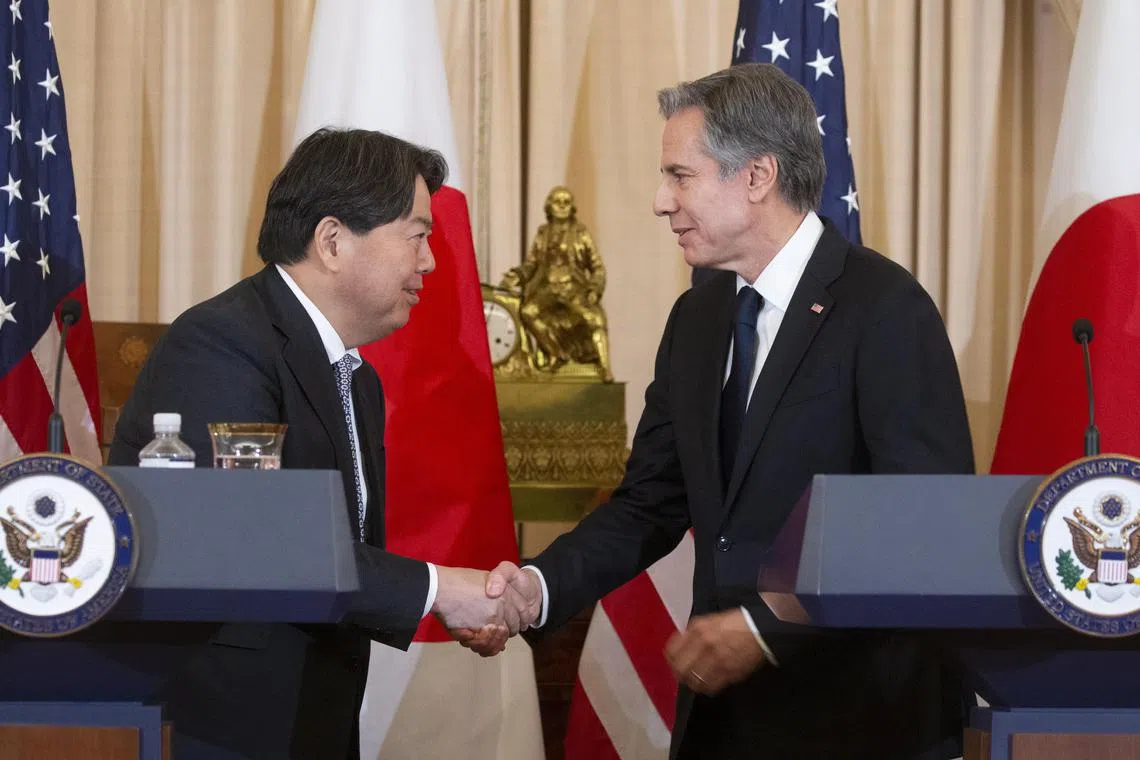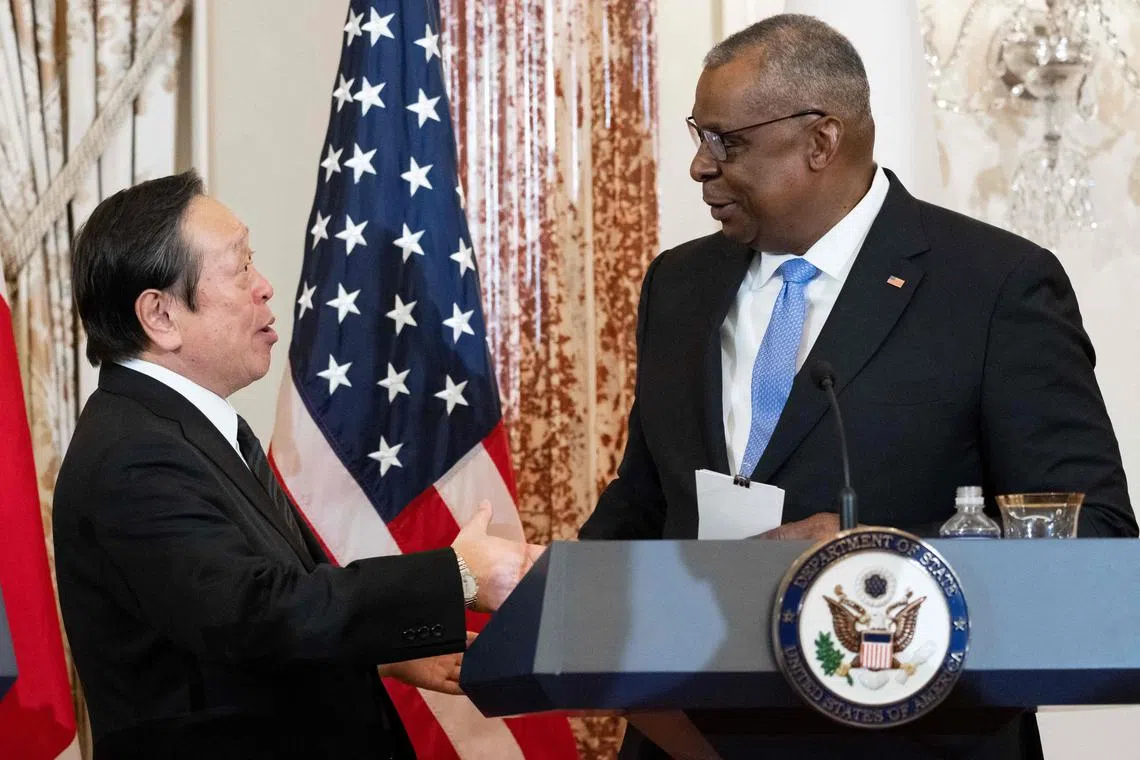US and Japan beefing up security, military capabilities to face ‘contested environment’
Sign up now: Get ST's newsletters delivered to your inbox

Japan's Foreign Minister Hayashi Yoshimasa and US Secretary of State Antony Blinken at a news conference in Washington on Jan 11.
PHOTO: EPA-EFE
Follow topic:
WASHINGTON – Facing a “severely contested environment”, Japan and the United States will significantly enhance security and military coordination and capability, the two sides said on Wednesday.
“The forward posture of US forces in Japan should be upgraded... by positioning more versatile, resilient and mobile forces with increased intelligence, surveillance, and reconnaissance, anti-ship and transportation capabilities,” they said in a joint statement.
Wednesday’s “two plus two” talks were led by US Secretary of State Antony Blinken and Secretary of Defence Lloyd Austin, and their Japanese counterparts, Foreign Minister Yoshimasa Hayashi, and Defence Minister Yasukazu Hamada.
The talks set the stage ahead of a summit on Friday between US President Joe Biden and Japanese Prime Minister Fumio Kishida.
North Korea continues to work on enhancing its nuclear and missile capabilities
But China loomed large in discussions, with Mr Hayashi saying it “presents an unprecedented and the greatest strategic challenge”.
“Its foreign policy to recreate international order to serve its self-interest is a grave concern for the Japan-US alliance and for the whole of the international community,” he said.
He added that Japan and the US will “continue to be united in raising objections against China’s attempts to change the status quo in the East China Sea, including its behaviour that seeks to undermine long years of administration by Japan of the Senkaku Islands”.
The US will upgrade its military capabilities
“We’re replacing an artillery regiment with an outfit that is more lethal, more agile, more capable,” he said. “It consists of a combat element, long-range fires and anti-ship capability, which I think is very, very important.”
Asked by a reporter if China is likely to invade Taiwan, given cross-strait tensions

Japanese defence minister Yasukazu Hamada (left) shakes hands with US defence secretary Lloyd Austin in Washington, DC, on Jan 11, 2023.
PHOTO: AFP
Japan and the US, citing “unprecedented alignment”, also agreed that an attack “to, from or within space” could trigger Article V of their mutual security pact, which commits the United States to come to Japan’s defence.
Japan just last month revised its defence policy to adopt a more forward approach, involving sharply raising military spending
The joint statement mentioned Japan’s “determination to lead in its own defence and to expand its roles, in cooperation with the United States and other partners, to actively engage in maintaining regional peace and stability”.
Mr Hamada told reporters: “I am committed to making maximum efforts to gain new capabilities, including counterstrike capability, and to enhance persistent warfare capability.”
Military-industrial cooperation, joint military exercises and training between the two countries will also be enhanced.
“Japan’s strategies align closely with our own National Security Strategy – both in the key challenges we identify as well as in how to effectively address them,” Mr Blinken told reporters.
“What you’re seeing in real time is an alliance that is modernising.”
Analysts expect China to be concerned over the new assertiveness of an old enemy, Japan, in partnership with the US – fuelling a military build-up across the region.
Dr James D.J. Brown, political science professor at Temple University in Tokyo, told the Japan Times: “Even though the actions by Washington and Tokyo are defensive and intended to enhance Japan’s security, they may be perceived as threatening by China, thus prompting Beijing to deploy more of its own military forces.”
Dr Patrick Cronin, chair for Asia-Pacific security at the Hudson Institute in Washington, said: “The alliance is more balanced, comprehensive, and complete than ever before. Preparations for contingencies around Japan… are being operationalised through counterstrike and anti-ship missiles, joint exercises and intelligence analysis… (and) the majority of the Japanese support these steps as necessary and appropriate.”
He added: “China’s blandishments about Tokyo’s past militarism will have little sway in a region wary of Beijing’s growing power and purpose.”
Dr Kurt Campbell, US National Security Council coordinator for Indo-Pacific affairs, called Japan’s reform of its defence doctrine a “remarkable journey”.
Japan has done this in “deepest consultation with the United States… (and) has consulted very broadly and widely… across the region as a whole”, he said on Thursday, speaking at an Indo-Pacific Forecast 2023 event at the Centre for Strategic and International Studies (CSIS) in Washington.
“There is an understanding that the environment around Japan has changed for the worse,” he said.


